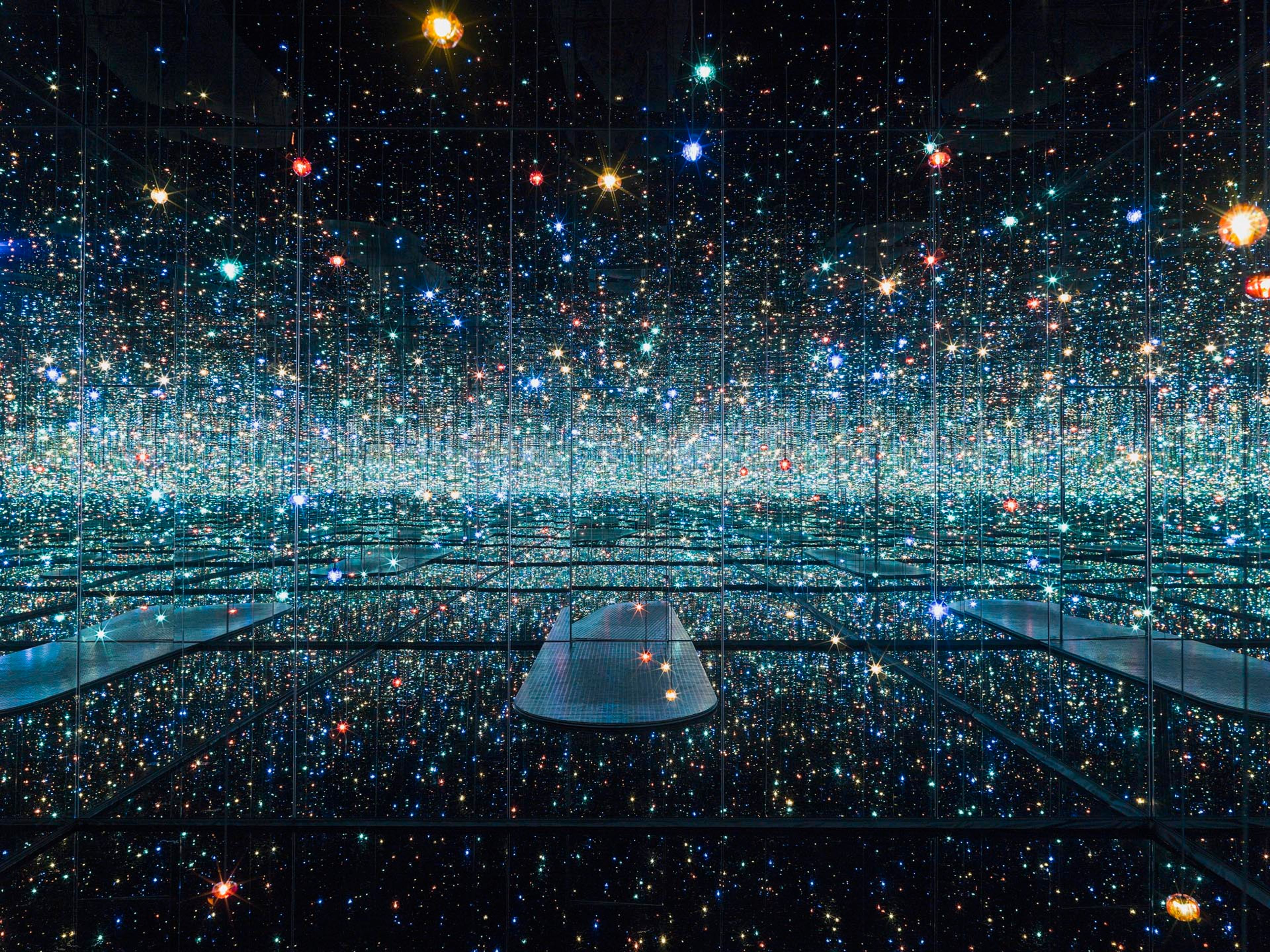September 12, 2019
Yayoi Kusama has been called the most popular artist in the world, drawing millions of visitors to experience her immersive installations. Her career spans paintings, performances, room-size presentations, outdoor sculptural installations, literary works, films, fashion, design, and interventions within existing architectural structures, which allude at once to microscopic and macroscopic universes.
Following her 2017 solo exhibitions at David Zwirner in New York, Kusama recorded the following message from her studio in Tokyo. “With the power I’ve been given by art,” the artist says, “I’ve fought a long battle to establish human nature today and maximize the beauty of the future.”
Born in 1929 in Matsumoto, Japan, Yayoi Kusama presented her first solo show in Japan in 1952. In the mid-1960s, she established herself in New York as an important avant-garde artist by staging groundbreaking happenings, events, and exhibitions. Her work gained widespread recognition in the late 1980s following a number of international solo exhibitions, including shows in 1989 at the Center for International Contemporary Arts, New York, and the Museum of Modern Art, Oxford, England. She represented Japan in 1993 at the 45th Venice Biennale to much critical acclaim.

“By the time she was ten . . . she was already doing pencil drawings that featured her distinctive motif of dots and netlike patterns that repeat across an entire surface.” —Andrew Solomon, Artforum
The key themes of Kusama’s work emerged when the artist was very young. Her childhood pictures of flowers at her parents’ seed nurseries show an early interest in vibrant, proliferating forms in nature, echoed also in her recent paintings.

“Deep in the mountains of Nagano, working with letter-size sheets of white paper, I had found my own unique method of expression: ink paintings featuring accumulations of tiny dots and pen drawings of endless and unbroken chains of graded cellular forms or peculiar structures that resembled magnified sections of plant stalks.” —Infinity Net: The Autobiography of Yayoi Kusama

“The first time I ever saw a pumpkin was when I was in elementary school and went with my grandfather to visit a big seed-harvesting ground . . . It seems that pumpkins do not inspire much respect. But I was enchanted by their charming and winsome form. What appealed to me most was the pumpkin’s generous unpretentiousness. That and its solid spiritual balance.” —Infinity Net: The Autobiography of Yayoi Kusama

Kusama arrived in New York in 1958 at 29 years old. Several of her most significant series were begun in this period, including her Infinity Net works and the Accumulation sculptures. Her breakthrough came in October 1959 at the artist-run Brata Gallery, where she exhibited five large Infinity Net paintings. During the late 1960s, Kusama gained widespread notoriety for pioneering body art performances and "happenings" like the one seen here. She returned permanently to Japan in 1975.

“Yayoi Kusama is an original painter. The five white, very large paintings in this show are strong, advanced in concept, and realized. The space is shallow, close to the surface and achieved by innumerable small arcs superimposed on a black ground overlain with a wash of white. The effect is both complex and simple.” —Donald Judd, in a review forARTNEWS of Kusama’s first solo exhibition in New York, 1959.

“With 1965’s ‘nfinity Mirror Room—Phalli’s Field, Kusama innovated the concept of artwork as immersive environment, with the viewer as participant . . . tossed into a sublime sea of repetition without beginning or end. . . . Enter a mirrored space and watch as your body is refracted and reflected into pure image, able to exist everywhere at once and thus no single place at all.” —Huffington Post

“Kusama’s art engages us in immediate, bodily, sensory experiences, allowing us to escape from and return to self-consciousness. . . . Her work is cathartic and concrete, universal and specific, infinitely appealing and intimately personal.” —Gayle Clemans reviewing Kusama’s recent traveling retrospective Infinity Mirrors in The Seattle Times.

“Kusama’s most recent works, overflowing with an untamed wilderness of organic forms . . . shimmer with an optical intensity that arises not from repetition but rather from the improvised accumulation of brightly colored tubers, tendrils, eyes, and misshapen faces.” —Melissa Chiu, director of the Hirshhorn Museum, describing Kusama’s painting series My Eternal Soul for The Wall Street Journal.
Cover image: Yayoi Kusama in New York, 1968 (detail). ©YAYOI KUSAMA



